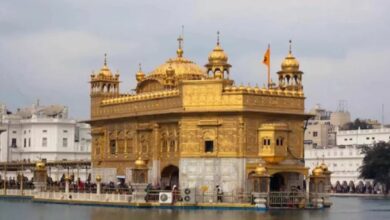Rajya Sabha In English: Everything You Should Know About The English Names Of India’s Parliament
As India’s Upper House of Parliament, the Rajya Sabha is an important part of the legislative process in that nation. There are a maximum of 250 members; 238 are elected to represent states and union territories, while the President of India appoints the remaining 12 members, who come from a variety of non-political fields including science, literature, art, and social work.

Members of the Rajya Sabha are chosen indirectly, in contrast to the Lok Sabha, which is chosen directly by the people.
However, are you aware of the English names for the Rajya Sabha and Lok Sabha?
The President and the two Houses, the House of the People (Lok Sabha) and the Council of States (Rajya Sabha), make up the Legislature of the Union, often known as Parliament. Within six months following the last sitting of either House, a combined session of the two Houses may be called under specific circumstances.
The Rajya Sabha is required by the Constitution to have 250 members, of which 12 are to be nominated by the President and have specialized expertise or real-world experience in fields including science, literature, art, and social service.
The representatives of the states and union territories are assigned the remaining seats, up to a maximum of 238.
The Rajya Sabha is elected indirectly, with State representatives chosen by the elected members of their respective legislative legislatures using a single transferable vote technique and a proportional representation system.
The laws passed by Parliament govern who gets to represent Union Territories in the legislature.
Rather than being dissolved, the Rajya Sabha retires one-third of its members every two years.
With 233 members from States and Union Territories and 12 members chosen by the President, the Rajya Sabha currently has 245 seats.
Lok Sabha
The members of the Lok Sabha are directly chosen by the general public via adult suffrage.
The Constitution stipulates that the Lok Sabha may have a maximum of 552 members, with 530 members from States, 20 from Union Territories, and, if needed, up to two members selected by the President to represent the Anglo-Indian community.
A proportionate relationship between the total number of seats and the population of each State is the goal of the distribution of electoral seats among the States.
There are now 545 members of the Lok Sabha, of whom 530 are directly elected from States, 13 from Union Territories, and two are nominated by the President to represent the Anglo-Indian community.
The distribution of seats among States in the Lok Sabha, as determined by the 1971 census, will not alter until the first census conducted after 2026, in accordance with the Constitution’s 84th Amendment Act.
The Lok Sabha’s tenure begins on the day of its first meeting and ends five years later, unless it is dissolved sooner.
Parliament may pass legislation to prolong the Lok Sabha’s term for up to a year at a time under a state of emergency, with the maximum duration being six months after the expiration of the emergency declaration.
To date, fourteen Lok Sabhas have been established.
Requirements for Parliamentary Membership
A person must be an Indian citizen and be at least 25 years old for the Lok Sabha and at least 30 years old for the Rajya Sabha in order to be eligible to serve in Parliament. Additional qualifications may be established by legislation passed by Parliament.
The roles and authority of the legislature
Like other parliamentary democracies, the Indian Parliament carries out a number of crucial duties, such as making laws, supervising the executive branch, approving the national budget, resolving public complaints, and debating a wide range of issues, including national policies, development strategies, and foreign relations.
The Constitution’s division of powers highlights Parliament’s supreme authority in the legislative sphere, even in areas that have historically been the exclusive province of the States.
Parliament plays a vital role in government by having the capacity to legislate on matters that are strictly the province of the States under certain conditions.
In accordance with the processes outlined in the Constitution, Parliament has the authority to impeach the President and dismiss judges of the Supreme Court and High Courts, the Chief Election Commissioner, and the Comptroller and Auditor General.
Every law requires the consent of both Houses of Parliament, however, when it comes to money bills, the Lok Sabha’s judgment is final.
Parliament has the authority to evaluate and oversee delegated legislation.
Furthermore, Parliament is able to propose changes to the Constitution.
Similar to the Lok Sabha and Rajya Sabha at the federal level, several state legislatures in English India are bicameral. Likewise, states may have two houses: the Vidhan Parishad, or Legislative Council in English, and the Vidhan Sabha, or Legislative Assembly.
The six Indian states of Andhra Pradesh, Telangana, Uttar Pradesh, Bihar, Maharashtra, and Karnataka currently have Legislative Councils. Jammu and Kashmir was one of the seven states that existed before. The state’s Legislative Council was abolished after the J&K Reorganization Bill 2019 changed the state’s status to become the Union Territories of J&K and Ladakh.







